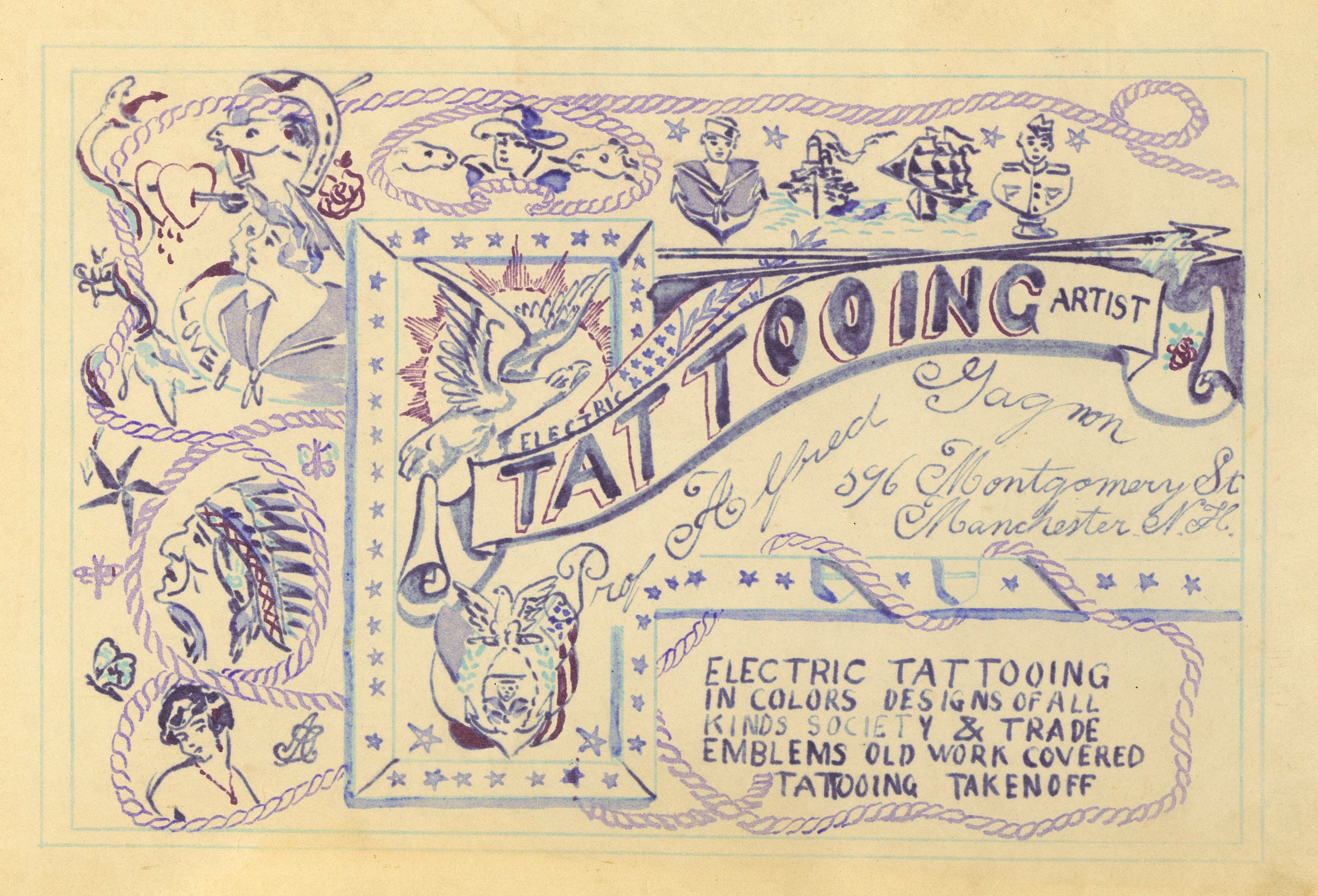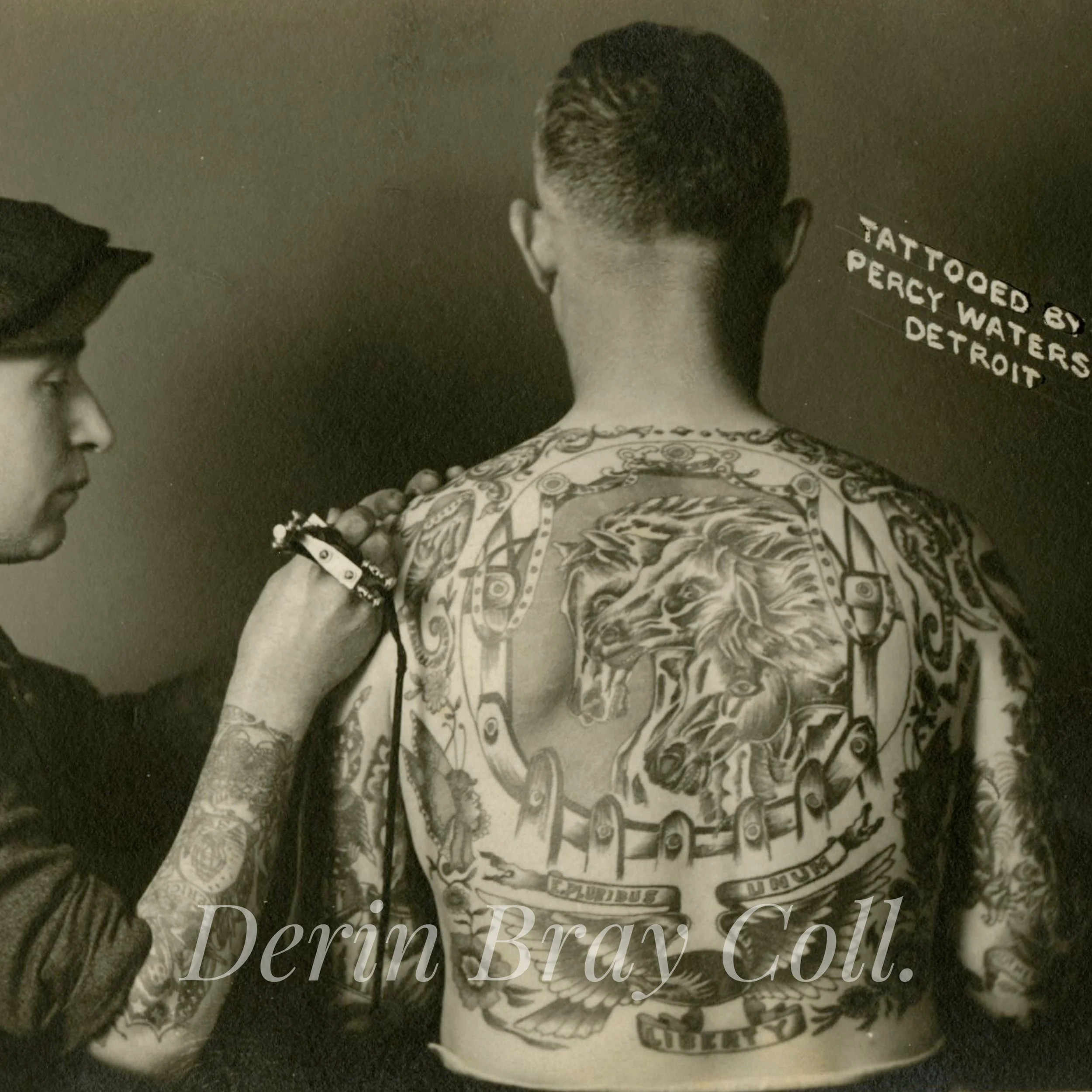Pioneering tattoo artist and tattooed attraction Clarence "Shorty" Schultz rubbed shoulders with some of the greats, including English-born tattoo artist William Grimshaw and the redoubtable Bert Grimm. He got his start in Chicago, sometimes tattooing out of Burton's arcade at 434 South State Street, but also operated a shoe shine parlor and tattoo shop in his hometown of Davenport, Iowa.
A newly-discovered stash of 100 year-old tattoo photographs sheds light on the life and early career of the “Original” Gus Wagner (1872-1941), the globetrotting tattoo artist and showman who has captured peoples’ imaginations for more than a 120 years.
In the heyday of New York’s rough-and-tumble Bowery, tattoo shops stood shoulder to shoulder with dive bars, flop houses, strip joints, dime museums and, quite notably, photo studios. Few people navigated this colorful landscape and its rotating cast of characters better than photographer William Ettlin. Long overlooked by scholars of tattoo history, Ettlin operated a bustling business at 17 Chatham Square, just footsteps from pioneering tattooers Prof. Samuel O’Reilly, “Electric” Elmer Getchell, Charlie Wagner and Lew “The Jew” Alberts. Because of his close proximity to their shops —and no doubt his prowess behind the camera— he often found himself at their service. Indeed, for several years in the early 1900s William Ettlin documented New York tattoo culture at its height. And he did so to spectacular effect!
Before transforming himself into a tattooed marvel, Joseph “Barney” Harkin was a plucky young tailor from Toronto, Canada. And like many performers who climbed to the top of their profession, his life story reads like a work of sensational fiction, replete with magicians, train wrecks, and even the mummified body of John Wilkes Booth –or so he claimed! Click on the link to learn more.
In 1950, veteran tattoo artist Edward “Ted” Liberty packed up his shop in Boston’s Scollay Square and made his way to Baltimore. His final destination was The Block, the notorious stretch of East Baltimore Street crowded with strip joints, dive bars, and shooting galleries. And like many other business owners in the city’s gritty entertainment district, he turned to local painter and cartoonist Eddie Levin for flashy show cards to decorate his new studio. Levin did not disappoint. He furnished Liberty with a bold and brightly-painted sign loaded with patriotic imagery and a banner that declared “Ted’s Tattoo Studio” was open for business.
The steely-eyed tattooed marvel known as “Dutch” has long captured the imaginations of tattoo history enthusiasts. His impressive body suit –comprised of circus elephants, butterflies, and a full-rigged sailing ship, among other designs— is documented by a series of photo postcards created in the 1920s for Percy Waters, the renowned Detroit tattoo artist and supplier. These striking images were sold to tattooers around the world, ensuring Dutch would be a familiar figure for generations to come. And yet, despite such an ample visual record, the identity of this hardened showman has remained a mystery –until now.
Ward Clark Hallings (1895-1990) got his first tattoo in Detroit around 1916. Within a few years he received a full suit of classic designs from veteran tattooer Richard L. Beck. Although Beck operated a shop in Newport, Rhode Island, he probably completed the work at his main studio and residence in Rochester, New York, where Hallings and his family called home.
The design for this business card was first used by Boston tattooer Edward W. Liberty (1883-1957), aka "Dad" Liberty, in the early 1920s. His son Frank (1902-1956) used the same card, but added a dirty joke on the reverse.









